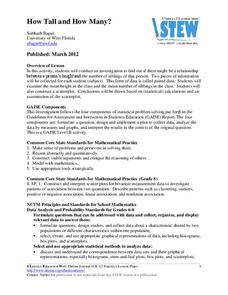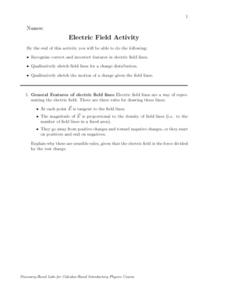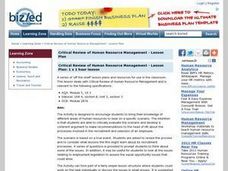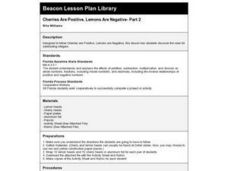Curated OER
Graphing Systems of Inequalities
In this systems of inequalities worksheet, 9th graders solve 10 different sets of problems that include graphing systems of inequalities. First, they graph each inequality separately. Then, students solve each system of inequalities and...
Curated OER
Solving Compound Inequalities
In this compound inequalities instructional activity, students solve and graph 12 different problems that include compound inequalities. First, they graph the solution of each compound inequality. Then, students write a compound...
Curated OER
Radical Equations
In this radical equations worksheet, 9th graders solve 10 different problems that include various radical equations. First, they isolate the variable in each equation. Then students solve by undoing the addition or subtraction, which...
Curated OER
Cyclic Nature
In this cyclic nature worksheet, 11th graders solve 10 different problems that include the powers of i. First, they use the patterns shown for the powers of i to solve. Then, students find any remainders when dividing. They also simplify...
Curated OER
Solving Inequalities
In this solving inequalities worksheet, students solve and complete 22 different problems that include using addition and subtraction to solve each one. First, they solve each inequality by getting the variable on one side alone. Then,...
Inside Mathematics
Two Solutions
Many problems in life have more than one possible solution, and the same is true for advanced mathematics. Scholars solve seven problems that all have at least two solutions. Then three higher-level thinking questions challenge them to...
Curated OER
Oil Spill
Fourth graders watch a video about the types of products made from oil or oil used as energy to produce the product. In groups, they identify the positive and negative aspects of oil and participate in various activities. They use the...
EngageNY
Estimating Quantities
Apply the concept of magnitude to estimate values and compare numbers. The ninth lesson of the 15-part series asks learners to write numbers to their next greatest power of 10 and then make comparisons. Scholars begin to understand the...
EngageNY
Opposite Quantities Combine to Make Zero
Find the cards that get to zero. The activity introduces the class to the idea of adding integers. Pupils use a number line to count up and count down when adding. They play a game to collect cards that will sum to zero.
It's About Time
Energy Flow in Ecosystems
Emerging biochemists more fully understand the flow of energy in ecosystems as they explore the laws of thermodynamics and relate them to energy transfer in food chains. They also investigate heat loss from the human body and how...
EngageNY
Understanding Multiplication of Integers
Repeated addition also works for multiplying integers. The lesson plan has the class play the integer game again, but has one card multiplied several times. Scholars write the multiplication expression and the addition expression that...
American Statistical Association
How Tall and How Many?
Is there a relationship between height and the number of siblings? Classmates collect data on their heights and numbers of brothers and sisters. They apply statistical methods to determine if such a relationship exists.
Curated OER
Electric Field Activity
In this physics activity, students identify and describe the correct and incorrect features in electric field lines. Then they qualitatively sketch field lines for a charge distribution and a charge given the field lines.
Curated OER
Ancient Greece (Sparta)
Students identify that Spartan civilization was founded upon a militaristic point of view that allowed no tolerance for contrary views or physical limitations. They take turns listing positive and negative qualities of the main...
Curated OER
Critical Review of Human Resource Management
Students discover different recruitment methods used by businesses. They identify the positives and negatives of the selection process. They use the information they gathered and apply it to different scenerios.
Curated OER
Teaching Awareness of Human Development
Students examine the process of human development and identify the reasons for a good nights sleep. Individually, they write a list of the situations in their lives which are stressful. As a class, they discuss myths about stress and...
Curated OER
Multiplying By Powers of Ten E
In this math activity, students use the operation of multiplication with positive and negative exponents. The answers are found on page 2.
Curated OER
Present Continuous
For this verb worksheet, students will focus on the present continuous tense. Students will read 7 questions and answer each question with a positive or negative response according to the picture shown for each.
Curated OER
Scientific Notation
For this algebra worksheet, students identify the correct method to write positive and negative exponents. They solve word problems and write in scientific notation. There are 21 questions with an answer key.
Curated OER
Unit 1, Worksheet 2, Calculator Worksheet
In this calculator worksheet, students explore place value, standard notation, and exponential notation. They add, subtract, multiply and divide positive and negative integers with and without a calculator. This three-page worksheet...
Curated OER
Atoms and the Periodic Table
Familiarize your new chemists with the periodic table of elements by contemplating this collection of slides. Element groups are identified, atoms are defined, and nuclide notation is explained. Isotopes are also mentioned. The topics...
Curated OER
Unit 4 - Periodic Table
There are 17 multiple choice questions on this periodic table test. The focus is on properties of the elements by group and period. The exam is not formatted well, making it a little difficult to read. There is also a typographical...
Curated OER
Cherries Are Positive, Lemons Are Negative- Part 2
Third graders, in groups, subtract integers by following Cherries are Positive, Lemons are Negative. They discover the rules for subtracting integers by using cherry heads and lemon heads.
Curated OER
Lesson Plan for Fontana Mines
Students estimate and compute with rational numbers. They compare, order and convert among fractions, decimals and percents. Students analyze problems to determine if there is sufficient or extraneous data to solve.























